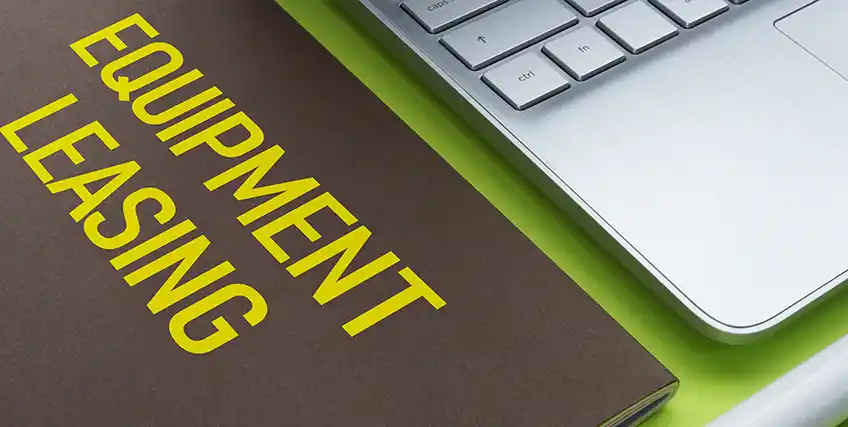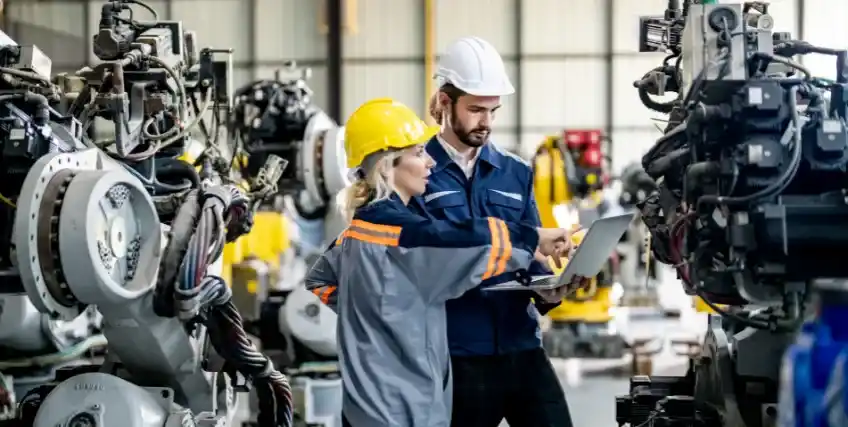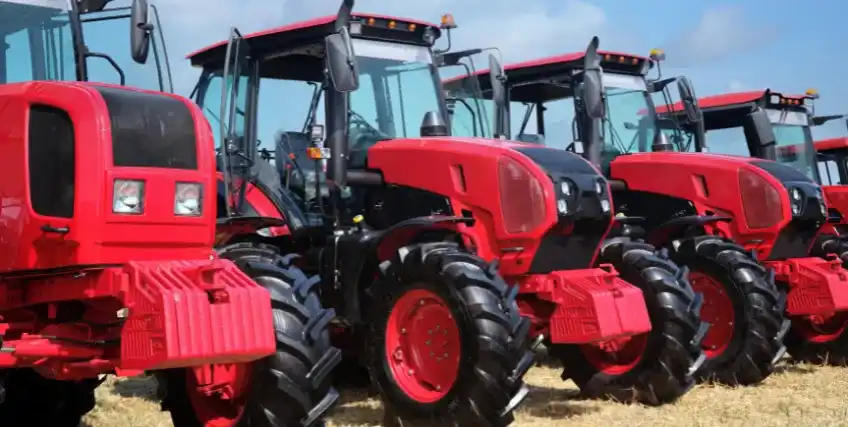How Equipment Leasing Fits into Your Overall Business Financing Strategy
June 10, 2025 | Last Updated on: June 10, 2025

Small business owners often face a critical question, how to access essential equipment without exhausting their cash reserves. Equipment leasing offers a powerful alternative to traditional business financing. It helps businesses stay competitive, flexible, and financially stable.
This financing option allows businesses to conserve capital while acquiring necessary tools to operate efficiently. By working with a trusted leasing company, small business owners can secure the right type of equipment quickly and on terms that match their cash flow.
In this article, we’ll explore how equipment leasing can support your overall financial plan. From preserving cash flow to adding flexibility, leasing could be what your business needs to grow strategically. Let’s walk through the concept, benefits, comparisons, and planning strategies you can use.
What Is Equipment Leasing?
Equipment leasing allows you to use equipment for a specific period without buying the equipment outright. You sign a lease agreement with a leasing company or lessor. Then you make regular monthly payments to use the equipment.
There are usually two types of leases:
- Operating Lease: You rent the equipment and return it after the end of the term. This is good for short-term or high-tech items.
- Capital Lease: You make payments toward eventual ownership. At the end of the lease, you may buy the equipment for fair market value.
Therefore, this flexibility makes equipment leasing attractive for small business owners who want easy access to tools without large upfront costs. It also gives business owners more room to experiment, scale, or pivot depending on their growth phase. Also, with equipment leasing, businesses can stay agile in a changing market.
How Can Small Businesses Use Equipment Leasing?
Equipment leasing is not limited to large enterprises. In fact, small businesses benefit significantly by accessing tools they can’t afford to purchase upfront.
Here are ways small businesses use leasing equipment:
- Upgrade outdated machines: Newer models keep your business efficient without making large purchases.
- Match cash flow with short-term projects: Seasonal businesses can lease equipment for peak months and return it after.
- Avoid rapid tech changes: In industries like IT or healthcare, tech evolves fast. Equipment leasing helps you stay ahead of the technology
- Improve liquidity: Money saved from purchasing equipment can be used for marketing, payroll, or expansion.
- Startups and lean operations: New businesses can access critical equipment using equipment lease financing without hurting their credit score or depleting working capital.
Some small businesses also use equipment leasing when expanding to new locations. They avoid upfront investments and reduce risks. However, others use lease structures as part of testing new service offerings.
Financial Advantages of Equipment Leasing
Every financing decision should support your long-term business health. This means evaluating not only short-term needs but also how each option affects future growth, risk, and flexibility.
Leasing equipment, in particular, stands out as a practical, flexible method of acquiring necessary equipment without depleting critical financial reserves.
Here’s how equipment leasing helps:
- Preserves Cash Flow: Leasing helps you avoid large down payments. That cash can stay in your working capital.
- Lower Monthly Payments: Leasing often has smaller monthly costs than loans or purchasing equipment.
- Possible Tax Benefits and Deductions: In many cases, lease payments are deductible as business expenses. This can create a helpful tax deduction.
- Easier Budgeting: Fixed monthly payments make it easier to forecast expenses and stay financially organized.
- Possible Quick Approvals from Providers: Compared to traditional equipment loans, leasing has a quicker application process from most lenders and providers.
- Reduces Asset Management Burden: You may not need to worry about repairs, disposal, or resale value, depending on your lease.
These benefits offer adaptable financing solutions that work with your existing business structure. Additionally, they ensure that small business owners don’t tie up resources unnecessarily.
Comparing Equipment Leasing vs. Equipment Financing
The comparison between equipment leasing vs. equipment financing loan can help you decide what fits your financial situation best. While leasing offers flexibility, financing may be ideal for assets with a long useful life. However, you should consider your goals and usage patterns before making a decision.
Use the table below to understand key differences:
| Feature | Equipment Leasing | Equipment Financing |
|---|---|---|
| Ownership | Lessee doesn’t own, returns or buys at end | Business owns the equipment after repayment |
| Upfront Costs | Usually minimal or none | Often requires a down payment |
| Monthly Payments | Typically, lower | Generally higher |
| Flexibility | Easier to upgrade equipment | Harder to change or sell equipment |
| Long-Term Cost | Can be more expensive over time | Usually cheaper in the long run |
| Possible Tax Benefits | Lease payments may be deductible | Depreciation and interest may be deductible |
How to Integrate Equipment Leasing into Your Financial Plan
Adding equipment lease financing to your strategy requires a detailed look at your operations. Start by identifying what type of equipment you need and the ideal lease term.
Then, ask yourself:
- Do I need flexibility to upgrade regularly?
- Will this equipment generate enough revenue during the lease term?
- Can I match lease payments with my cash flow?
Equipment leasing works best when combined with other financing options. For example:
- Term Loans can cover long-term investments like real estate or major renovations.
- Lines of Credit can be used for ongoing operating expenses.
- Easy equipment financing like leasing offers lower interest rates and fewer barriers for growth.
This diversified strategy helps keep your balance sheet clean while improving operational flexibility. It also allows business owners to better allocate funds across departments or scale into new markets.
Common Mistakes to Avoid When Considering Equipment Leasing
While equipment leasing can be beneficial, it's important to read the fine print and fully understand the terms involved. Leasing agreements can differ widely between providers, and what works for one business may not suit another.
However, being informed can help avoid unexpected costs and obligations that impact your long-term financial health.
Look out for:
- Early Termination Fees: Ending a lease early can come with penalties.
- Maintenance Obligations: Some leases require the lessee to handle all repairs.
- End-of-Term Surprises: Know your buyout options at the end of the lease.
Moreover, review every lease agreement with your accountant or attorney. Always understand your responsibilities fully before choosing a lease program. Make sure not to assume that all leasing terms are the same across all providers.
Is Equipment Leasing Right for Your Small Business?
There’s no universal answer. What works for one business may not work for another. The right choice often depends on your industry, budget, and goals. You might also consider how the equipment integrates with your existing workflow and revenue strategy.
For equipment leasing, think about:
- Your business model
- Equipment lifespan and replacement cycle
- Monthly budget and projected growth
Lease to own equipment may appeal to some, while others prefer ongoing upgrades through operating lease structures. Either way, both help finance equipment while preserving resources. Consider your usage expectations and how the asset impacts your revenue.
Let’s take an example. A small U.S.-based cafe needed to upgrade its kitchen with new ovens, coffee machines, and POS systems. Instead of spending $30,000 upfront, they opted for a 36-month equipment lease to own program at $950 per month.
The result?
- Kept their savings intact.
- Gained access to the latest tech.
- Budgeted better with consistent monthly payments.
Additionally, their credit score also remained stable because they avoided taking out a large equipment financing loan. By the end of their lease term, they had the option to purchase the equipment at a fair market value. This approach supported their growth without overextending their finances.
Conclusion
Every business needs the right tools. But owning them outright isn’t always the best choice. Equipment leasing can provide financial breathing room while helping your business stay competitive.
It also frees up working capital that can be used to hire talent, market your services, or expand operations. Plus, by avoiding hefty upfront investments, your business may stay more adaptable during uncertain economic cycles.
Explore your leasing options today. Compare offerings from each financing company. Find lease programs that match your business loans or growth plans.
Take control of your financing strategy, start planning smarter with equipment lease financing now.
Frequently Asked Questions About Equipment Leasing
What is equipment leasing, and how does it work?
Equipment leasing generally involves using equipment for a set term without owning it upfront. Businesses usually make monthly payments under a lease agreement with a leasing company. Therefore, this financing option may offer more flexibility, depending on your financial goals and operational needs.
Is leasing equipment better than buying it outright?
Leasing equipment might depend on your cash flow, growth plans, and how long you plan to use the equipment. Additionally, equipment leasing may reduce upfront costs, but buying could make more sense for long-term use. However, every situation calls for a closer look at the numbers and your strategy.
Can I still deduct lease payments for tax purposes?
There are cases where lease payments are tax-deductible as business expenses. However, it might depend on your lease structure and tax setup. It’s probably best to check with a tax advisor who understands your specific situation.
How does leasing compare to an equipment loan?
Each financing option has its own pros and cons. Loans may offer ownership, while equipment leasing might offer lower monthly payments and fewer initial costs. However, the right fit could vary based on how long you’ll need the equipment and your budget.
Are there risks involved with equipment leasing?
Like most financing options, equipment leasing comes with potential risks. These might include early termination fees or unexpected maintenance responsibilities. It’s often wise to read the fine print carefully and compare providers.
Frequent searches leading to this page
Term Loans are made by Itria Ventures LLC or Cross River Bank, Member FDIC. This is not a deposit product. California residents: Itria Ventures LLC is licensed by the Department of Financial Protection and Innovation. Loans are made or arranged pursuant to California Financing Law License # 60DBO-35839




